Prince Edward Island! Anne of Green Gables house, Charlottetown Slaymaker & Nichols, Instagrammable PEI.
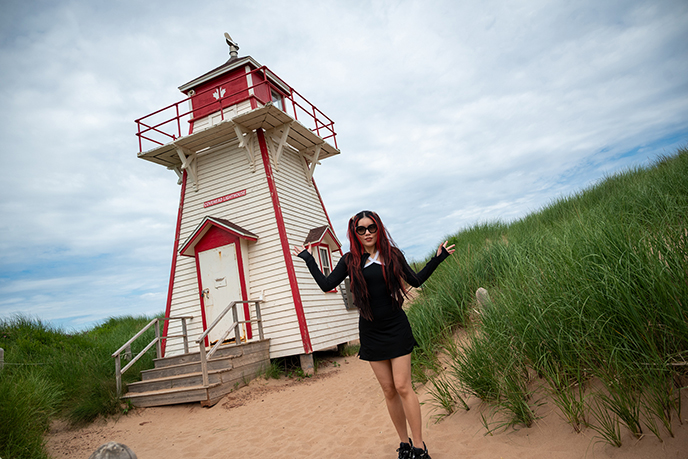
My Canadian travel adventures continue in one of the most beautiful and distinctive locations in Canada: Prince Edward Island!
I’ve had PEI on my bucket list ever since I was young, and finally got the chance to spend two quick but magnificent days in the province with photographer Joey Wong.
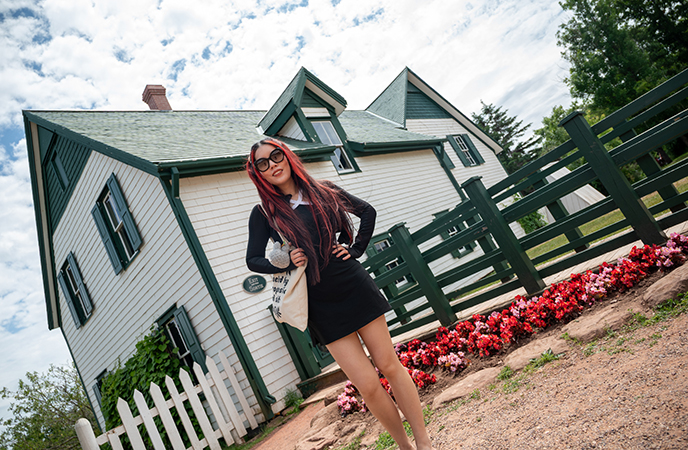
Of course, we pranced around the Anne of Green Gables house in Cavendish (aka Avonlea)! Did you know that the Japanese are mega-fans of Anne Shirley, the feisty orphan in Lucy Maud Montgomery’s novels?
Read on for photos from Green Gables Heritage Place and other must-visit photogenic spots around Prince Edward Island!
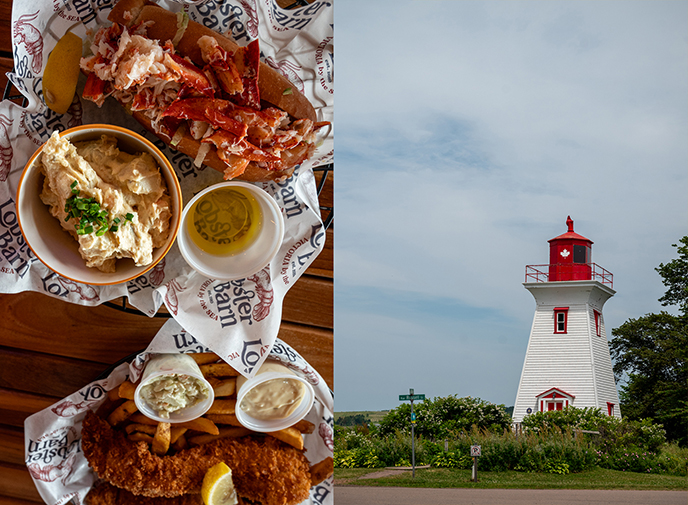
If you’re driving to PEI from Nova Scotia, stop by the fishing village of Victoria as you make your way up to Charlottetown, the capital city.
We were hungry after driving for several hours, and stopped here to devour seafood at Lobster Barn.
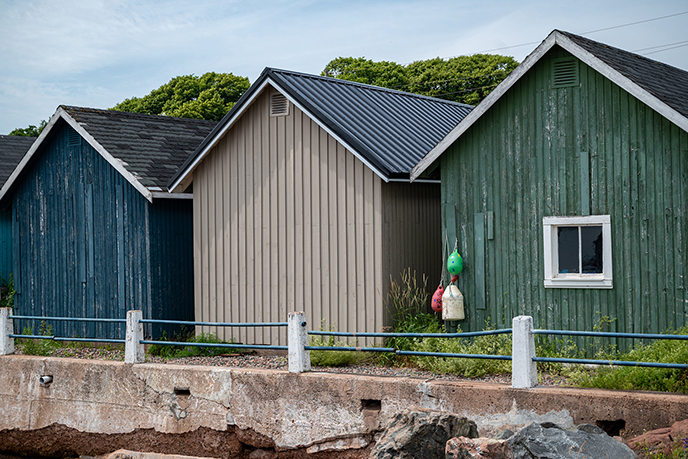
Victoria-by-the-Sea is a quaint seaside village that preserves the old-school charm of the Maritimes fishing heyday.

Stop here for scenic views as you chow down at Lobster Barn. The lobster roll with warm butter, and fish and chips hit the spot. Don’t miss out on PEI spuds, as the local potatoes live up to their fame.
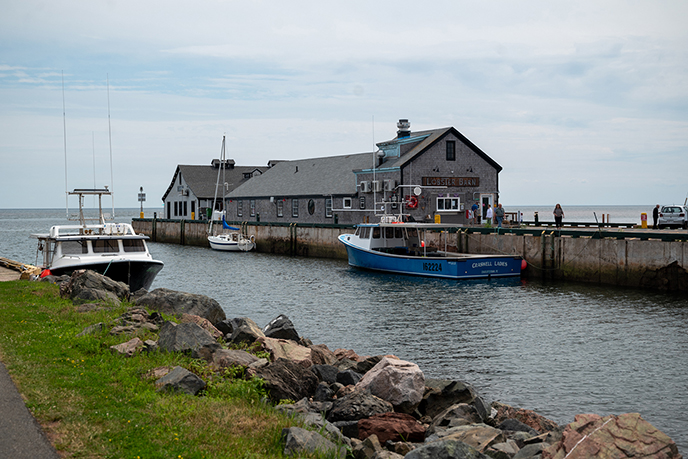
Victoria’s historic seaport was founded in 1819 and features a lighthouse, fisherman shacks and fishing vessels.
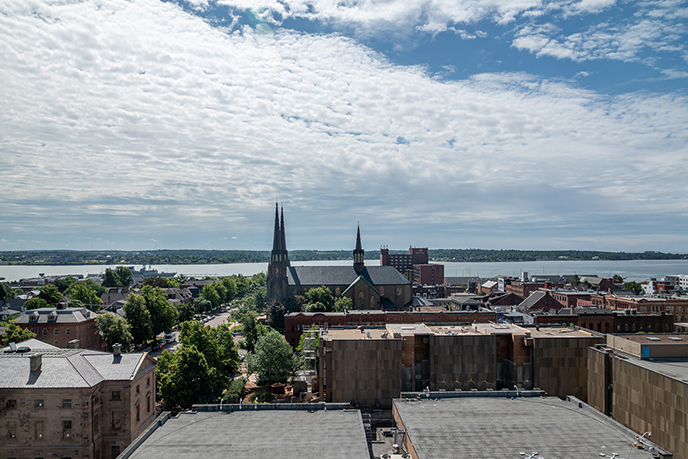
Then, we settled into our downtown Charlottetown digs at The Holman Grand Hotel. The spacious rooms and prime location (on the main Queen Street) made this the perfect choice for our brief trip to PEI.
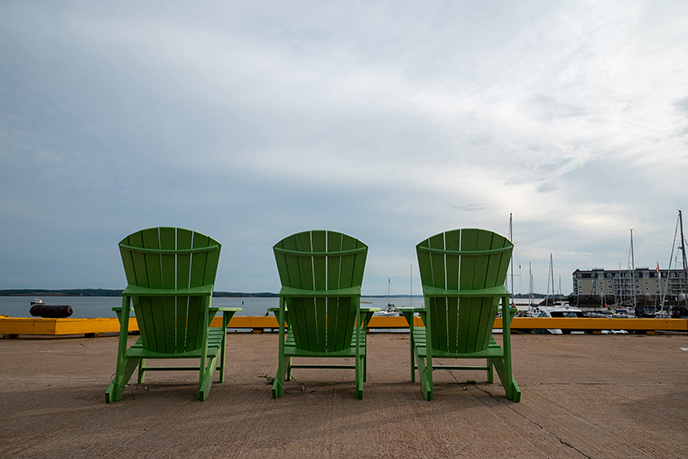
The capital city is small and easily walkable. We strolled down Queen Street to the waterfront and Confederate Landing Park, where we saw people fishing from the pier and lounging on Adirondack chairs.
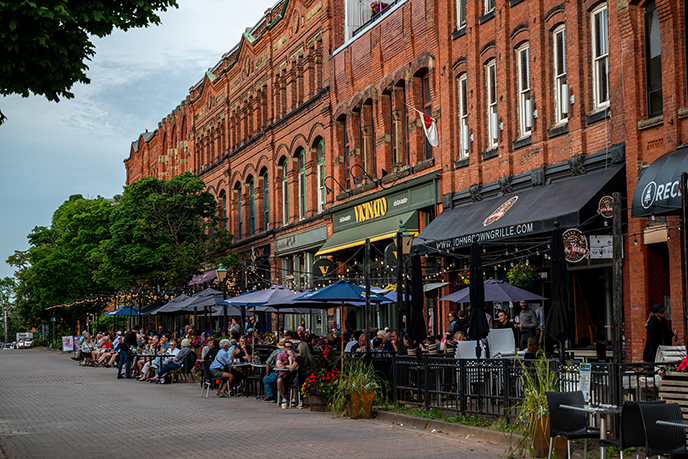
Queen Street is lined with classic brick buildings and rows of seafood restaurants, Anne of Green Gable shops and craft boutiques. I was pleased to hear free live music at several spots during my walkabout.
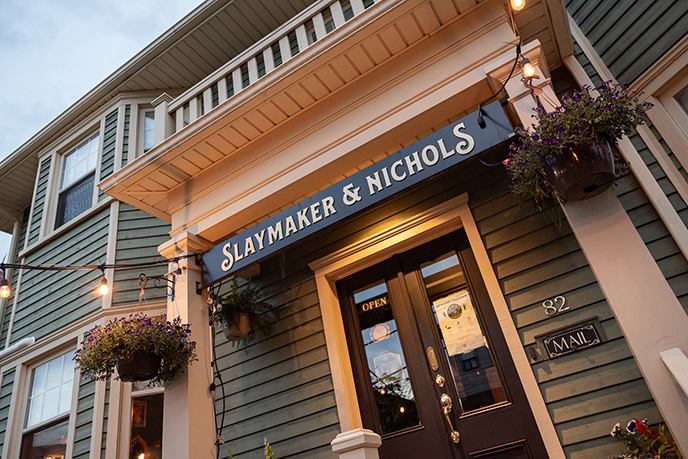
Many told me that the best spot in Charlottetown for dinner is Slaymaker & Nichols gastro house — and from the moment I spotted the vibe-y exterior, I knew this was the right choice.
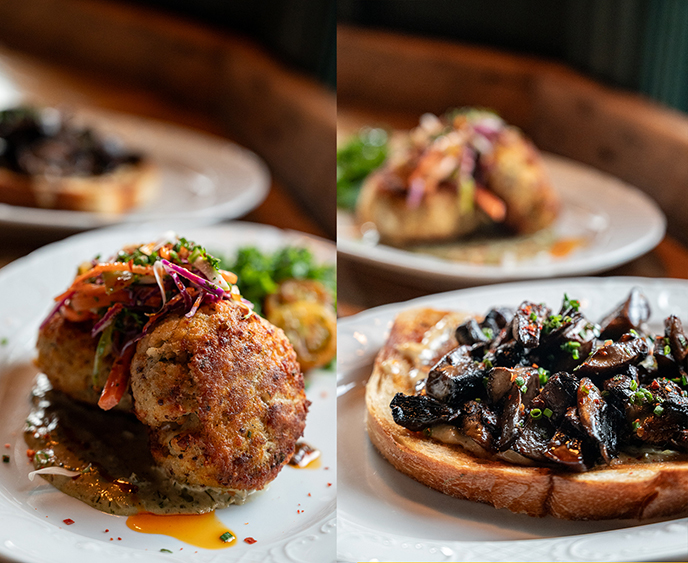
Slaymaker & Nichols has a playfully-named menu that serves fresh, local ingredients in bright and creative creations. You can tell from the photos that these dishes slayed: “Let’s Go Mushrooming” portobello and crimini mushrooms on garlic toast, and house made smoked haddock and salmon cakes with tangy sauces.
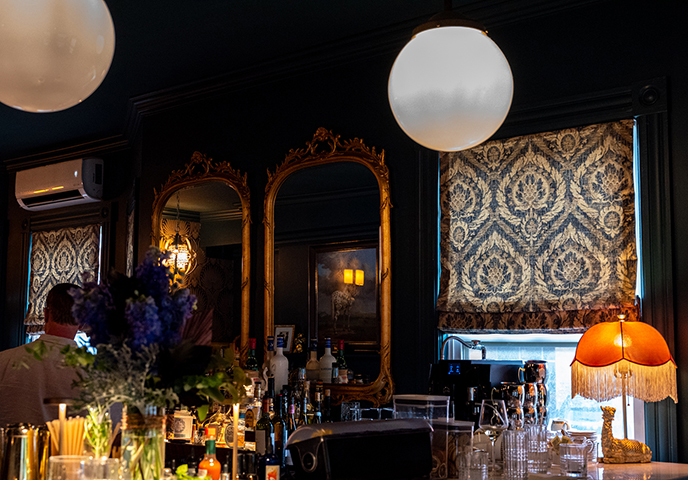
The interior’s vintage feel is a hat-tip to the 19th-century Slaymaker & Nichols Olympic Circus, which caused a splash in Charlottetown in 1864.
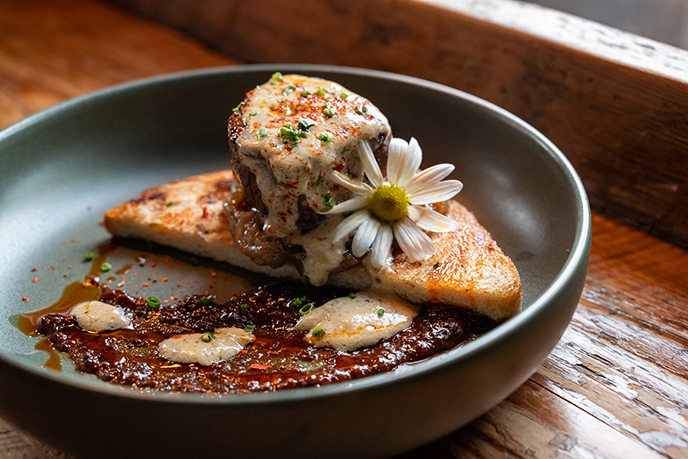
The elegant carnival atmosphere extends to the charmingly presented, mouthwatering dishes designed for sharing.
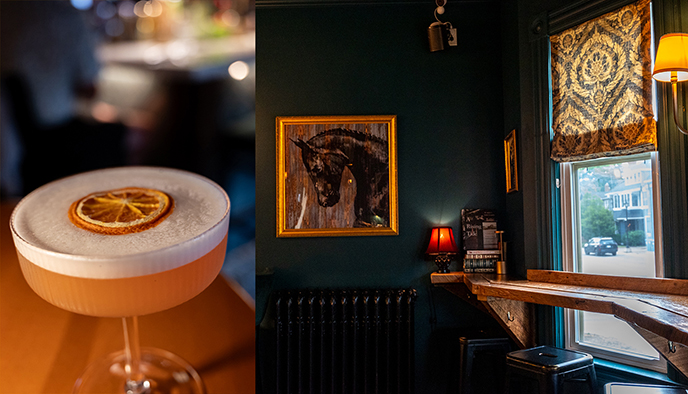
The mixology is a stand-out: I had a hard time deciding between all the creative, well-balanced cocktails like this orange one with foam and bitters.
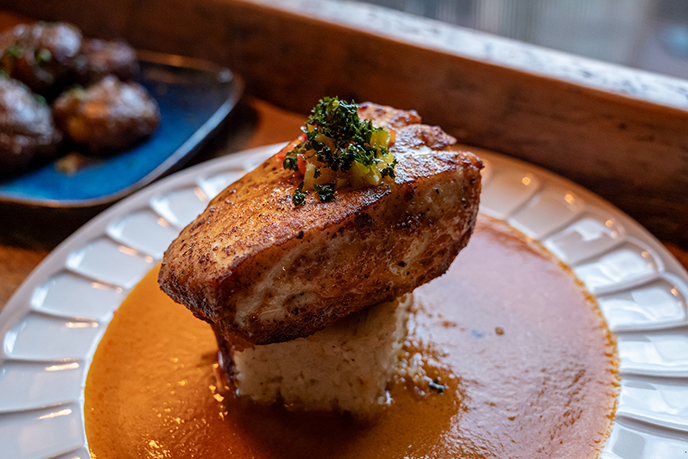
Slaymaker & Nichols features rotating menu items like this Thai curry fish and rice dish. Ask your server for the daily recommendations, although everything you’ll eat here is a slay!
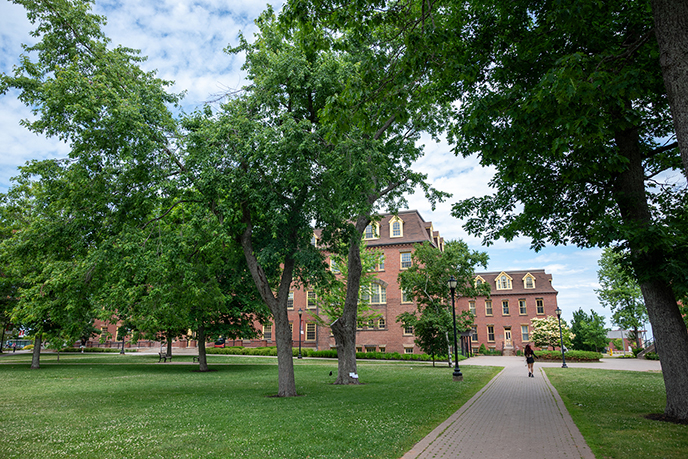
The next day, we drove to the University of Prince Edward Island in Charlottetown — a tranquil campus with lovingly maintained brick school buildings.
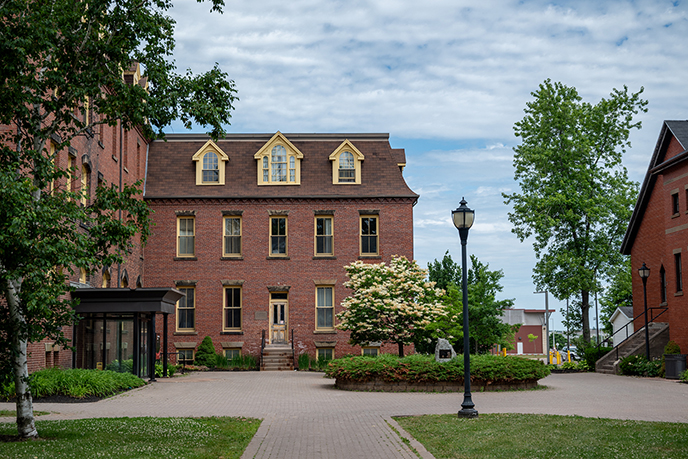
I can’t stop mentioning how the Canadian Maritimes took me back in time to the happy, relaxed 1990s. The authentic friendliness and gentler pace of life here are so different from my usual travel experiences.
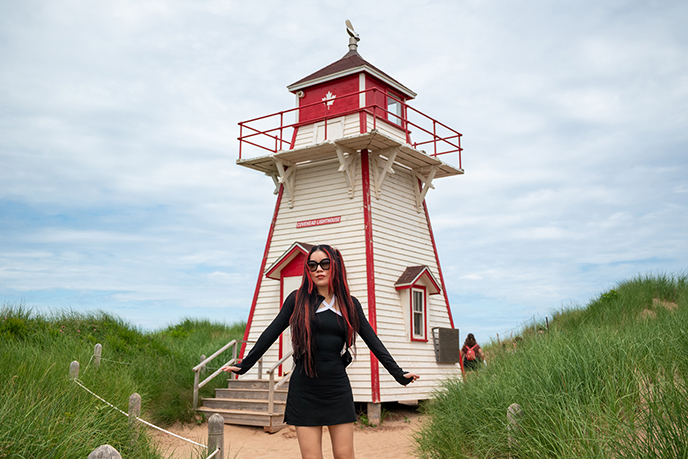
It’s best to have a car when traveling in Prince Edward Island, as the driving conditions are easy and you can better access areas around the province — like Brackley Beach up north.
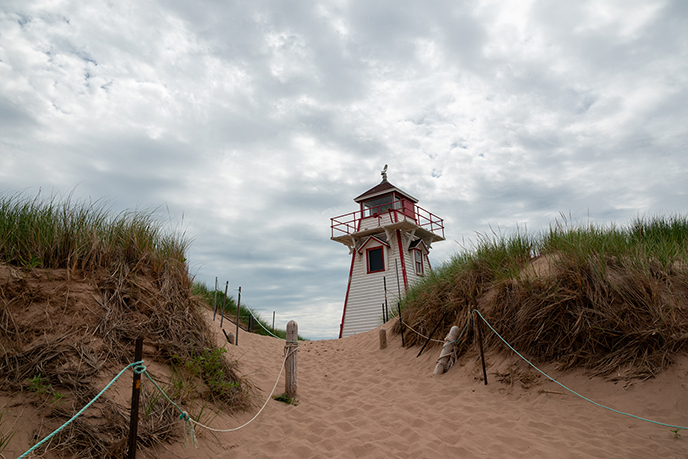
We rode to Covehead Harbour Lighthouse, a tapered wooden tower built in 1975.
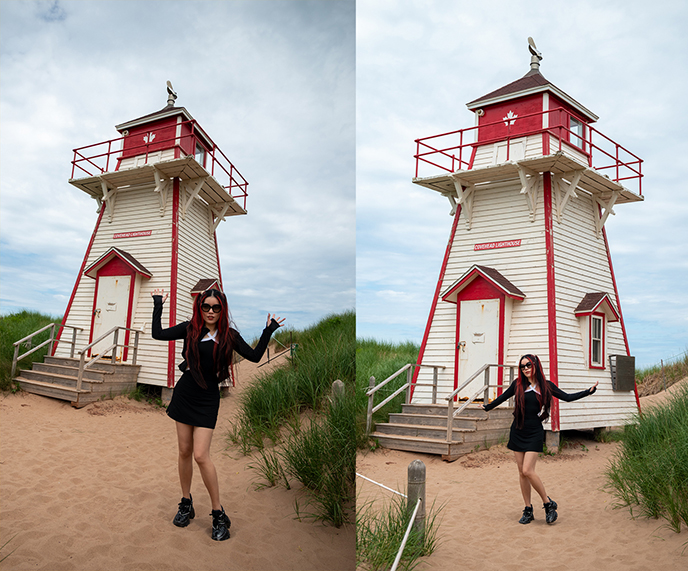
The sand at Covehead Bay is so powder soft — did you expect landscapes like this in Canada?
Wearing a jacket and dress by Michi, Roberto Cavalli sunglasses, and Anthony Wang shoes.
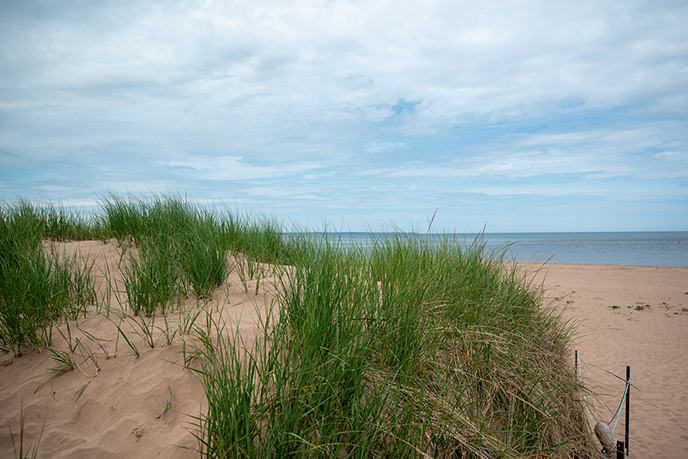
Brackley Beach is one of the most popular beaches in PEI, only 20 minutes away from Charlottetown. The clear water, dramatic dunes, and long stretches of sand are fire.
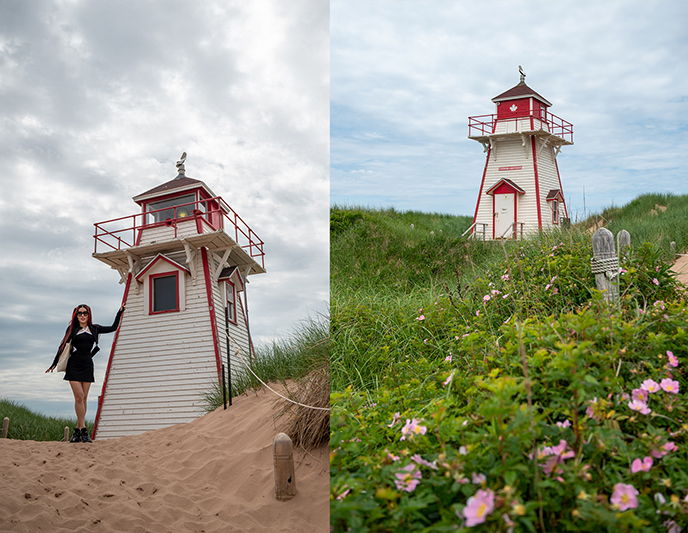
Canada’s tiniest province remains predominantly rural, with gorgeous flora and greenery especially in the peak summer season.
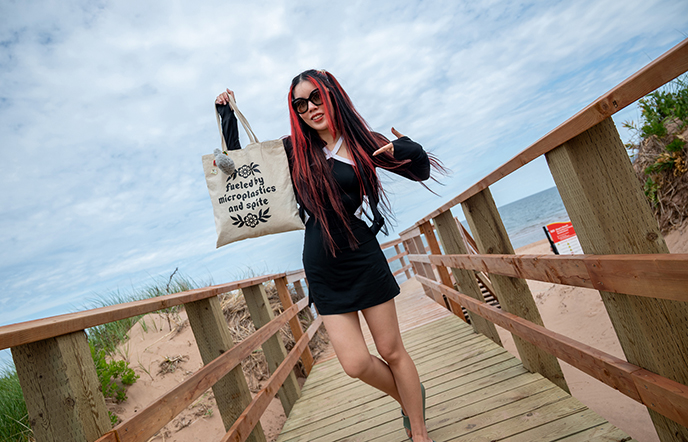
It’s so chill at Brackley Beach that for once, I was not fueled by spite — but you can never escape the fate of microplastics! Bag by Mourning Breath Shoppe.
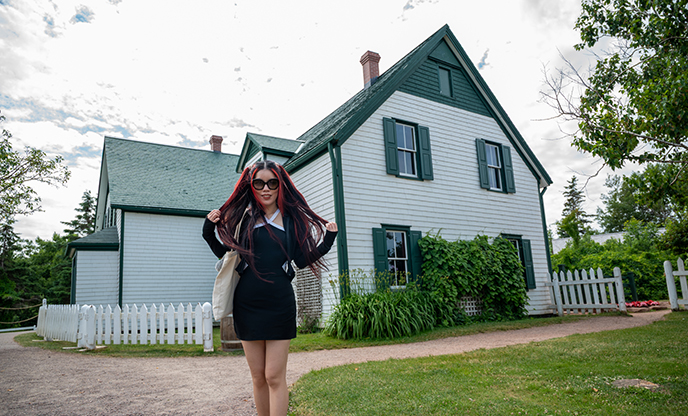
When in Prince Edward Island, you must make the pilgrimage to Green Gables Heritage Place in Cavendish. Anne of Green Gables fans will immediately recognize Anne Shirley’s green and white Avonlea home featured in the children’s books, movies and TV shows.
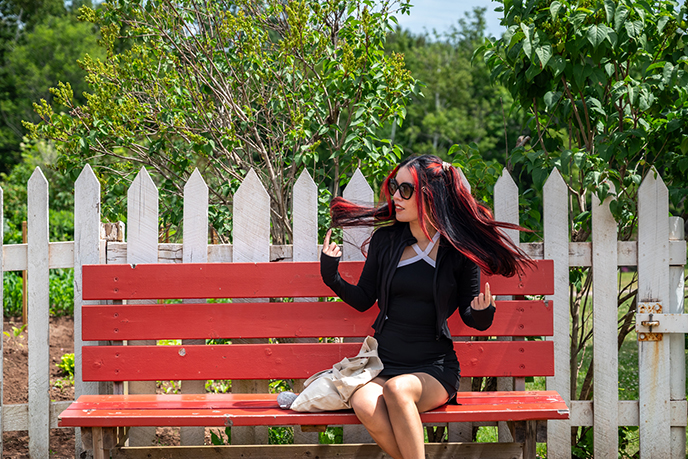
Anne of Green Gables is a 1908 novel by local author Lucy Maud Montgomery, which spanned sequels and various film, TV and manga adaptations. The tales of the fiery red-headed orphan girl and her journey growing up captured the hearts of millions — including a particularly passionate audience in Japan.
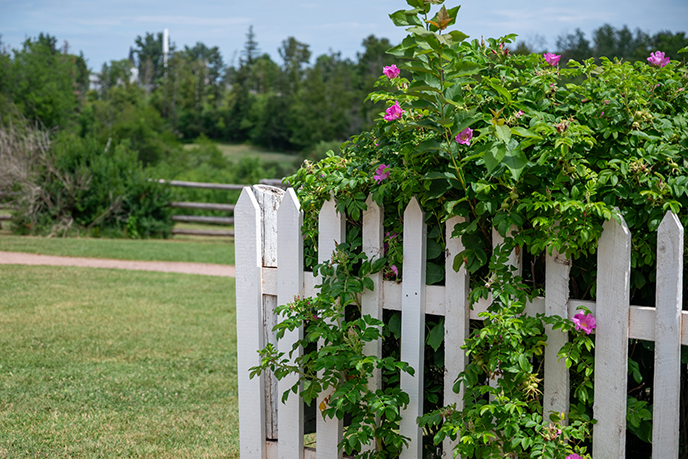
The novel is centered in Green Gables, the home in which orphaned Anne (“with an E”) is raised by Marilla Cuthbert and her brother, Matthew. The setting is based on L.M. Montgomery’s memories of this turn of the century house and surrounding farmland of Cavendish (which inspired Anne’s fictional home of Avonlea).

Lucy Maud Montgomery lived nearby and frequently visited this real-life Green Gables owned by her aunt Annie, which is now a National Historic Site and part of Parks Canada.

The author had warm memories of her “second home” and was even married here in 1911. Visitors can go inside and get immersed in the storybook via the Anne of Green Gables Museum.
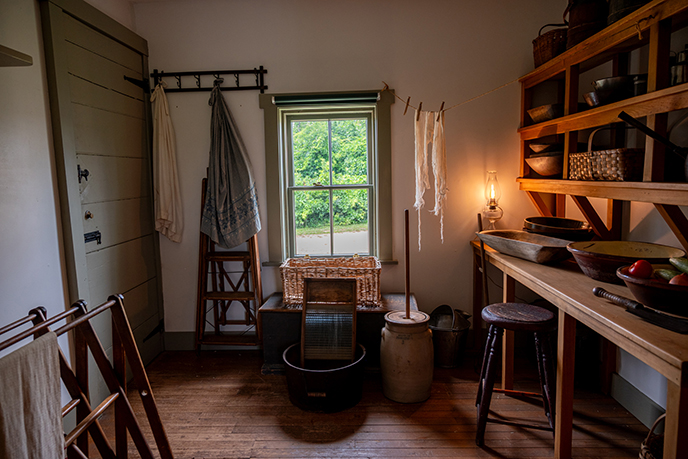
How quaint is the kitchen with the butter churn and washboard? If you grew up with the Anne books and films/shows like I did, then being here hits you right in the feels.

I was tickled to see the puffy sleeved dress, which was one of Anne Shirley’s dearest wishes! Stoic father figure Matthew was so pleased to gift her with the puffed sleeved dress of her dreams.
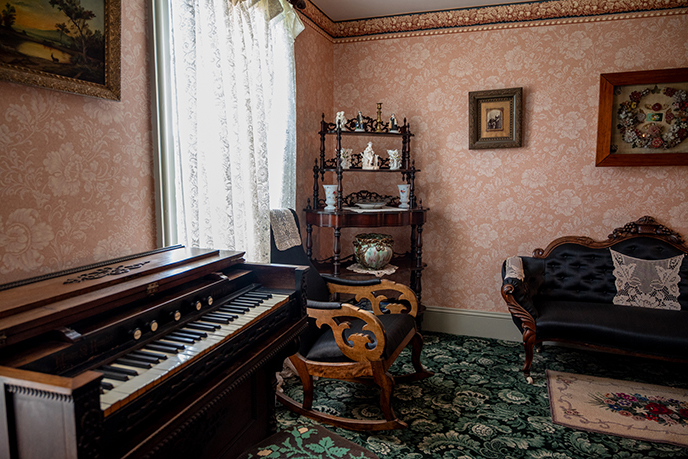
Anne of Green Gables is a Canadian icon, and led to a number of related works like the TV spin-off “Road to Avonlea.”

Going inside Green Gables Heritage Place lets you be part of her world.

The novel is set in the late 19th century, so there are a variety of old-time photo spots, exhibits and activities throughout the property — like this carriage in the barn.

PEI is home to other Anne attractions including L.M. Montgomery’s birthplace in New London, Anne of Green Gables Museum at Campbell Homestead, the Lower Bedeque School where Montgomery taught, and Avonlea Village, a recreation of the storybook setting. There may also be performances of Anne of Green Gables–The Musical.

Why is Anne so big in Japan, where she is known as Akage no An (赤毛のアン) or “Red-haired Anne”? The story was translated to Japanese after WWII and became a beloved anime series. As a result, she became a pop culture icon and many Japanese tourists visit Prince Edward Island because of her.

Super-fans can also pick up souvenirs like Anne’s Raspberry Cordial, a sparkling berry beverage that is unique to PEI and a fav of the character.

After visiting the buildings, take a walk through the Haunted Wood and the romantic Lover’s Lane.
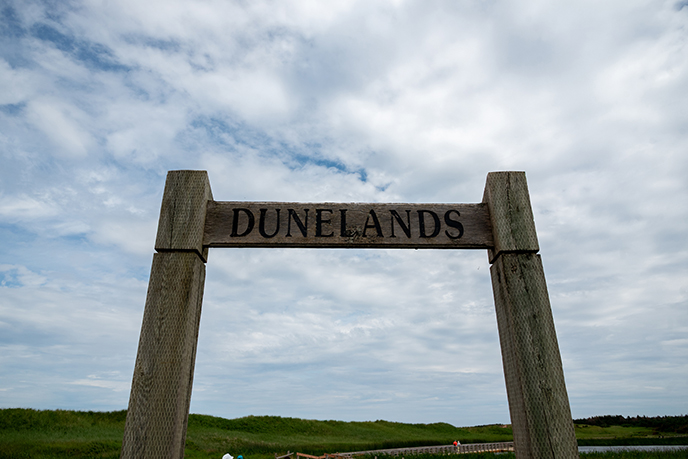
As we were in Cavendish, we popped over to the Dunelands Trail by the water.

The easy path is lined with ponds, sand dunes and boardwalk with plenty of chances to spot flora and fauna.

Summer is the best time to visit Prince Edward Island, as the weather is comfortable and everything is in bloom. (Although accommodations are pricier, so book early.)

L Maud Montgomery enjoyed visiting Cavendish Beach with her friends and family. The relaxed natural setting makes it feel like a scene from the past.
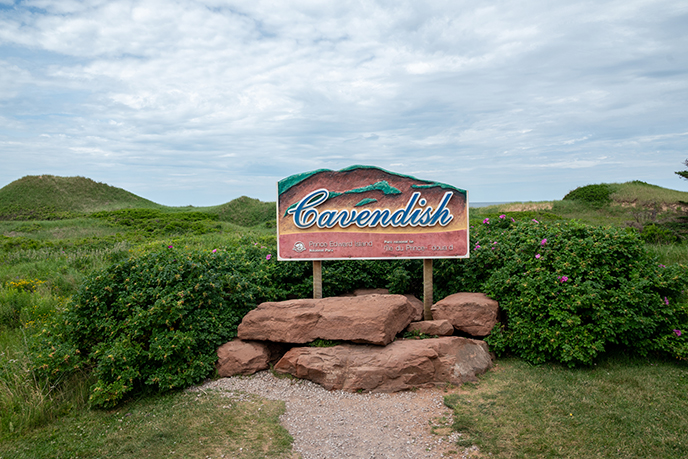
How 90s is the Cavendish sign? I love the nostalgic feel of PEI and the Canadian Maritimes.

Can’t get over the stunning red sandstone cliffs and wind-sculpted dunes overlooking the Gulf of St Lawrence.

Photographer Joey Wong and I only got to spend a short time in PEI, but we’d love to come back to take it easy by the red sand beaches. (And eat more seafood and spuds.)
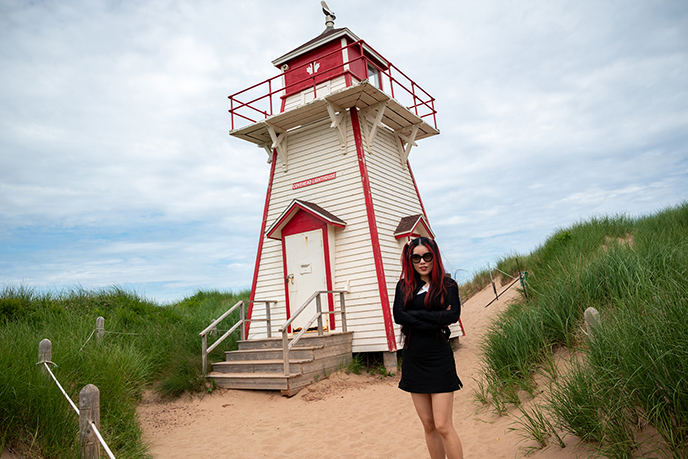
Traveling in Canada rocks! Please add me Instagram @lacarmina to see snaps from this trip (saved in IG Stories) — as well as my most recent adventures in Japan for Halloween.

More Canadian travels and adventures to come — I’m keen to see new parts of the country with friends like Sancho Angulo (you may remember our game show appearance on trivia TV series, CTV Battle of the Generations! Here we are on the downtown Vancouver Seawall recently).

Are you an Anne of Green Gables aficionado? Do you want to visit Prince Edward Island, Canada’s smallest (and arguably sweetest) province?
SHARE & COMMENT
In Tokyo, Japan for Halloween: 2025 Goth parties, clubs, events! Vancouver BC sailing, content creation photography.

Out of office notice… I’m heading to Japan for over a month! I’ll be mostly in Tokyo, but hopping around to a few other places for work and pleasure in October – November — and celebrating Halloween to the max, of course!
Brace yourself for tons of Japanese Goth and alternative travel / food / art / nightlife stories on the blog and @lacarmina IG! Read on for my 2025 Tokyo Halloween Goth parties / nightclubs guide, and a catch-up on Vancouver summer adventures (above photo by Denis Nossevitch @denuudoesphoto, who will be in Japan with me so you can expect tons of fab visuals).
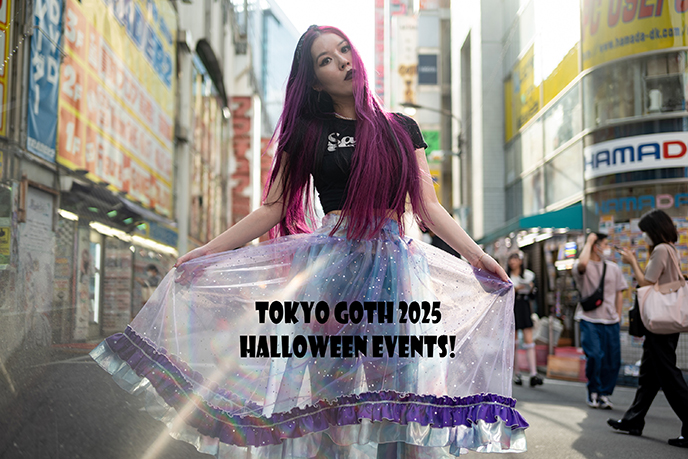
Looking for Goth Halloween 2025 events in Tokyo, Japan? I’ve gotchu for spooky season! Come party with me at the following Oct – Nov events.
NOTE: I have an extremely packed work schedule while in Japan so I can’t meet up / make plans outside of these events… BUT you can find me at the parties listed here, so please come and we can hang!

♥︎ Oct 18, Haus von Schwarz – Casket of Horrors Gothic drag show @ Shinjuku Heist (horror-themed drag queens!) Get tix now for the Re-Death 5th anniversary (cheaper in advance), or pay at door: ¥4300 – Can’t wait to see Yukiro and his queens strut the stage!
♥︎ Oct 25, Dark Dimension (3rd floor Goth DJs including Mistress Maya, dancers) & Tokyo Decadance 20th anniversary Halloween! At Shinjuku Ohjo – info and tickets here.
♥︎ Nov 1, Mistress Maya (of Midnight Mess) is having a Goth alternative club night @ Earth+Gallery (shibari rope bondage, ghoulish makeup stations, coffin experience!) More details here.
♥︎ Nov 9, Blood Flowers Goth and Post Punk festival! Tons of bands like 13th Moon will be performing, daytime at Shinjuku Loft. Info and tix here.

What will you be wearing for Halloween?? Currently prepping my ‘fit for celebrating in Japan! A look back at my nun-tastic costume for a Tokyo fetish party that had quite the shenanigans…
Stay tuned for Halloween coverage on my IG @lacarmina (turn on notifications so you don’t miss anything). And see this video of Goth Japan parties for a preview of what will go down!

I’m currently doing all my Japan pre-trip prep… which includes getting an e-sim. Remember the old days when we had flip phones, and had to wrangle a physical sim card to insert into our cells?
Thankfully, these days, it’s way easier to get connected thanks to Pangia Pass. Their digital e-sim is easy to install on a smartphone (just activate it through your device over WiFi), and you get unlimited data in 105+ countries! No roaming or top-ups required, meaning you can use Internet any time on your phone in Japan (and most major global destinations) as soon as you land.
If you’d like to check out Pangia Pass (which is my go-to for international travels), use my code LaCarmina at PangiaPass.com!

Before I head to Asia for the fall, let’s recap my Vancouver summer adventures. I had much fun in the sun… but now, I’m focusing on skin repair.
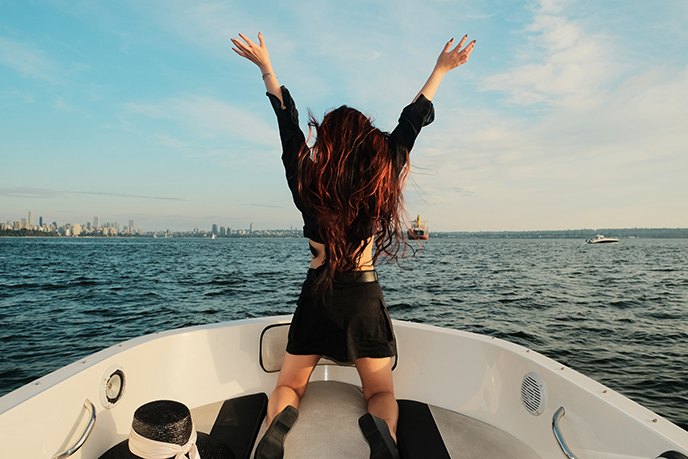
Even this Goth girl ends up catching rays when I’m out sailing, at the beach… (La Carmina portraits by Denis Nossevitch @denuudoesphoto)

If you’ve been following my skincare posts, you’ll know I swear by SkinMedica’s TNS Recovery Complex (human growth factors serum scientifically proven to improve skin tone, texture, resilience – well worth the investment).
My kawaii Tohoku, Japan mascot nails are by Glam Nail Studio — the best Japanese nail salon in the Vancouver area! See more images of my hand-painted gel nails here

Online ordering has been complicated in this Collapse era, so I was glad to find my holy grail at at Beauty Sense, a Canadian company with authentic medical grade skincare and beauty products. Had a flawless experience ordering from BeautySense.ca — the package shipped fast, with no surprise charges.
Recommended for my fellow skincare junkies, esp if you’re in Canada!

These fab images were taken by photographer Denis Nossevitch @denuudoesphoto) while we were sailing around the Vancouver coastline with a Granville Island Boat Rentals speedboat.

Ever rented a speedboat & experienced the thrill of blasting through the waves? Perhaps these images will inspire you to have an unforgettable afternoon like ours with Granville Island Boat Rentals.
Wearing The Poets at Sea cropped Goth kimono top by Sloe Design Studio. Their romantic, vintage-inspired circular fashion is right up my alley: natural and upcycled fabrics, circular fashion, and an indie Canadian company. You can see more from the latest collections on sloedesign.ca and visit them at their new Montreal location.

Serving main character energy, always. My vintage leather belt is from The Plain Circle Vintage, and the giant glam sunhat is the Mirabel by Eugenia Kim – get the exact hat here.

Hats off to sailing around Vancouver’s coastline with Granville Island Boat Rentals! See the full set of images from this day by Denis Nossevitch here – much more to come from us in Japan this month!

And now, for a different vibe… If there’s live music and dining, I’m in. @denuudoesphoto and I spent a memorable evening The Shelf, an intimate studio-style performance every Friday at Hestia Kitchen + Bar in Richmond, BC. Musicians play to a small audience in a raw, stripped-down session.

That night, local band Badwater Basin rocked the cozy space with 70s desert / psychedelic / mountain inspired soundscapes. The glowing interiors decorated with bottles are the definition of lit.

Add on dinner at Hestia Kitchen + Bar for the perf night out. We dined on Italian-Asian fusion (like yuzu and baijiu cocktails, wagyu carpaccio, bone marrow with chili sauce) under the tall, glowing shelves.

Playing with chiaroscuro and flash – more of these photos from The Shelf / Hestia shoot by Denis Nossevitch here.

Since earlier this year, I’ve been shooting tons with Vancouver-based photographer James Nguyen @ngu.photos as well — and I’m delighted to hear you’ve been digging his photography style! I’ll end this blog with a wrap-up of our various shoots around the city.

It’s giving Lake Como or St Tropez… but we’re sailing in downtown Vancouver, BC! Beyond fab to lounge in a 19 ft Bayliner VR4-Sport and take in views of the Pacific ocean and coastline.

She’s “sliving” for the summer. Wearing The Poets at Sea cropped kimono blouse by Sloe Design Studio. See more of this shoot by James here.

I see a red door and I want to paint it black… Shooting with @ngu.photos on a sunny day in Vancouver Chinatown — love his architectural and street photography!

We also were invited to the World’s 50 Best Bars celebration in Vancouver this year. So many friends from the food/cocktail world flew out for the cocktail bar awards ceremony… the city turned into a who’s who of award-winning bartenders. What a treat to try world class cocktails and count down the 2025 list of best bars in North America – and the afterparties and pop-ups rocked. More images from the night here.

OMG you killed Kenny! You batard! An outfit shot by James Nguyen before dinner at…

AMA Raw Bar on Fraser Street in Vancouver, BC. Did you know Vancouver has a Japanese speakeasy with live music? We adored this sultry Japanese cocktail bar / restaurant with live jazz or DJs on Sundays and Blade Runner glowing interiors!

AMA’s cocktails were all on point, with flavours like yuzu and shiso with Japanese whiskey & gin, and a stellar sake selection. Share the fresh hamachi crudo, tuna tartar & salmon hako sushi – and don’t sleep on that wagyu cheeseburger.

Images by James Nguyen – add him on IG @ngu.photos.

And here’s a vibe-y shot from Chickadee Bar in Vancouver Chinatown, which has become our favorite spot for cocktails inspired by sci-fi, retro pop culture and anime! More of these glowing interior shots here.

“Go down, go down / To the Queen of Chinatown / She’ll pick you up when you’re feeling down!” (Amanda Lear’s 1977 disco song fit the mood). Shooting with @ngu.photos at Sun Yat-Sen Park in Vancouver Chinatown. Add me at @lacarmina IG for more fashion, food and travel inspiration.

And now, summer is setting and fall is around the corner… my favorite time of the year, of course! Who else is thrilled that we are finally back in spooky season?
I’m feeling 1970s-core for my fall ‘fits. Wearing a long 100% wool coat by Rudsak (the Mandy in rust – love their tailored, Canadian outerwear).

Sunglasses are my favorite accessory, and Arena Eyewear is in my autumn rotation. Their sleek, Italian eyewear with a futuristic bent is exactly my style. Arena’s Sirena red cat-eyes and Albatro tortoise aviators are certain to turn heads. Check out their chic glasses for men and women at ArenaEyewear.com
Plum red chunky Y2K hair by Katya at Kore Salon in downtown Vancouver, BC.

That feeling when you’re about to board a plane to Japan… Can’t wait to see friends and go all-out for Halloween! (This is from a Miffy x Atacz bag launch – we went a bit nuts meeting the giant bunny, as you can see in my video here!)

PS: I have tons of travel journalism coming out in the next while as well. To start, here’s a roundup of small town Halloween celebrations that I did on assignment from Fodor’s Travel.
Brace yourself for tons of Japanese Goth alternative travel / food / art / nightlife stories on the blog and @lacarmina IG – add me! If you have suggestions for places to cover, let me know in the comments. Happy Halloween!
 LA CARMINA
LA CARMINA






